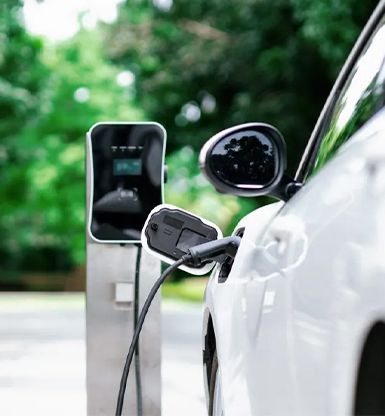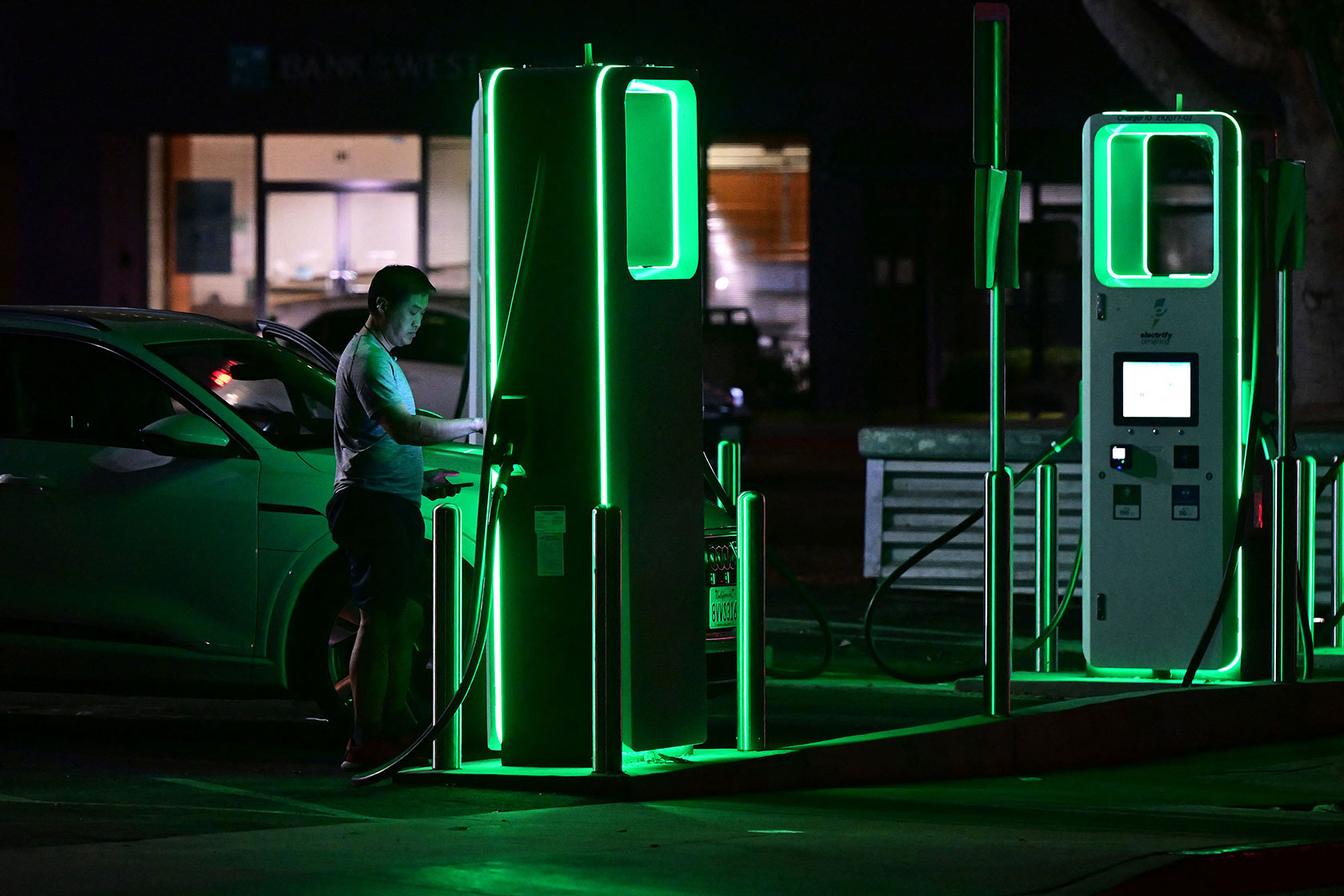What’s Driving the Growth of EV Infrastructure? Buy EV Charging news for Key Updates
What’s Driving the Growth of EV Infrastructure? Buy EV Charging news for Key Updates
Blog Article
Top EV Charging Information: Key Updates on Infrastructure and Development

Current Developments in Fast-Charging Modern Technology
Additionally, innovations in battery technology, consisting of boosted thermal monitoring systems and higher power thickness batteries, complement fast-charging capabilities. These developments mitigate the danger of battery degradation throughout rapid charging, guaranteeing durability and efficiency for EV owners.
Additionally, the combination of smart charging services is boosting customer experience, making it possible for real-time surveillance and dynamic pricing models. EV Charging news. This flexibility allows motorists to optimize charging times and expenses based upon grid need
As car manufacturers proceed to purchase fast-charging networks, the cooperation in between industry stakeholders is crucial. Collaborations between billing terminal suppliers and automobile manufacturers are paving the way for considerable coverage, eventually fostering an extra robust EV community. These developments are crucial in supporting the change to sustainable transportation.
Government Initiatives for Billing Expansion
Federal government campaigns play a critical function in the growth of electrical automobile (EV) charging facilities, promoting the shift to sustainable transportation. Various federal and state programs are being applied to enhance billing availability, minimize the financial burden on customers, and advertise the adoption of electrical automobiles.
Notably, the united state government has actually assigned considerable financing through the Facilities Financial Investment and Jobs Act, which sets aside $7.5 billion for EV charging network advancement throughout the country. This funding is focused on releasing thousands of brand-new charging stations, particularly in underserved locations, thus addressing variety anxiousness among prospective EV purchasers.
In addition, countless states are enacting legislation to enhance the permitting process for charging station installations, which is important for speeding up release. Incentives such as tax credit reports and discounts for both customers and companies are additionally being introduced to urge the installment of charging facilities.
Moreover, public-private collaborations are significantly becoming an emphasis, leveraging private financial investment to complement federal government funding. These campaigns emphasize a joint approach crucial for building a comprehensive and efficient EV charging network, inevitably adding to a greener and more sustainable future.
Innovative Battery Solutions Enhancing Efficiency
Changing the landscape of electrical automobile (EV) innovation, innovative battery solutions are significantly enhancing performance and performance. Developments in battery chemistry, specifically with lithium-sulfur and solid-state batteries, are leading to enhanced energy thickness, which permits for longer arrays and faster billing times. These brand-new battery kinds have the potential to surpass standard lithium-ion batteries by using higher capacities while decreasing weight, consequently enhancing overall vehicle effectiveness.
In addition, developments in battery administration systems (BMS) are enhancing power usage and prolonging battery life expectancy. Intelligent algorithms keep track of battery health and performance, enabling real-time modifications to billing and releasing procedures. This not only improves the efficiency of the battery but also makes certain a more dependable and sustainable power source for EVs.
Additionally, the integration of reusing innovations is dealing with the environmental influence of battery manufacturing and disposal. Developments in second-life applications for EV batteries are facilitating their usage in energy storage systems, adding to a round economy.
As these innovative battery remedies remain to evolve, they assure to transform the EV market, making electric automobiles much more attractive and available to a broader target market while supporting international sustainability goals.

Collaboration Between Automakers and Charging Networks
Recognizing the vital requirement for a robust charging facilities, automakers are progressively working together with charging network companies to improve the EV ownership experience (EV Charging news). These partnerships aim to create a seamless billing ecosystem that profits customers and sustains the shift to electric cars
Major automotive brand names are signing up with pressures with well established charging networks to expand their billing terminal protection, making sure chauffeurs have access to convenient and reliable charging options. Partnerships with networks like ChargePoint and Electrify America permit automakers to integrate billing solutions directly into their cars' navigating systems, assisting users to the closest terminals and supplying real-time availability updates.
In addition, these partnerships frequently cause the advancement of fast-charging modern technologies that dramatically decrease the moment needed to reenergize an see page EV. By pooling sources and competence, automakers and charging networks can introduce faster, developing solutions that satisfy the growing demand for electrical mobility.
Additionally, joint initiatives may additionally lead to even more standard charging procedures, which can alleviate consumer complication and advertise broader EV fostering. On the whole, these tactical partnerships are crucial in building a user-friendly and effective billing framework that meets the requirements of a broadening electrical vehicle market.
Difficulties Dealing With EV Billing Framework
As the electric car market continues to expand, numerous obstacles are surfacing that hinder the advancement of a detailed billing framework. Among the key barriers is the insufficient number of charging stations, particularly in rural and underserved metropolitan areas. This space produces variety stress and anxiety among prospective EV purchasers, preventing them from making the button.
Furthermore, the absence of standardization in billing modern technology makes complex the facilities landscape. Variants in plug kinds and charging speeds can produce confusion for individuals and enhance functional complexities for billing network continue reading this operators. Moreover, the combination of billing stations right into existing electric grids poses substantial obstacles. Lots of regions deal click to read more with capacity restrictions, calling for significant financial investments in grid upgrades to accommodate enhanced demand.
An additional pushing issue is the high cost connected with the installation and maintenance of charging terminals, which can be a barrier for both public entities and private businesses. Regulative difficulties and zoning limitations can delay the release of charging facilities, restraining development in broadening important services. Attending to these obstacles will be vital for promoting a durable EV community that sustains the change to lasting transport.
Final Thought
To conclude, the recurring advancements in EV billing technology, sustained by significant federal government campaigns and ingenious battery solutions, are essential for the expansion and efficiency of electrical vehicle infrastructure. Cooperations between automakers and billing companies additionally enhance terminal coverage, addressing the growing demand for accessible charging options. In spite of difficulties that persist within the EV charging landscape, these growths represent a positive trajectory towards an extra effective and lasting electrical car ecological community.
Developments in billing infrastructure have led to the development of ultra-fast battery chargers capable of providing up to 350 kW of power, substantially minimizing charging times. Variants in plug types and charging speeds can develop confusion for customers and increase functional complexities for billing network drivers.In verdict, the continuous advancements in EV charging modern technology, sustained by considerable government efforts and innovative battery options, are crucial for the growth and effectiveness of electric automobile infrastructure. Partnerships between car manufacturers and charging providers even more boost station coverage, resolving the growing need for easily accessible billing options. Regardless of difficulties that persist within the EV billing landscape, these developments signify a favorable trajectory in the direction of a much more reliable and sustainable electrical car community.
Report this page